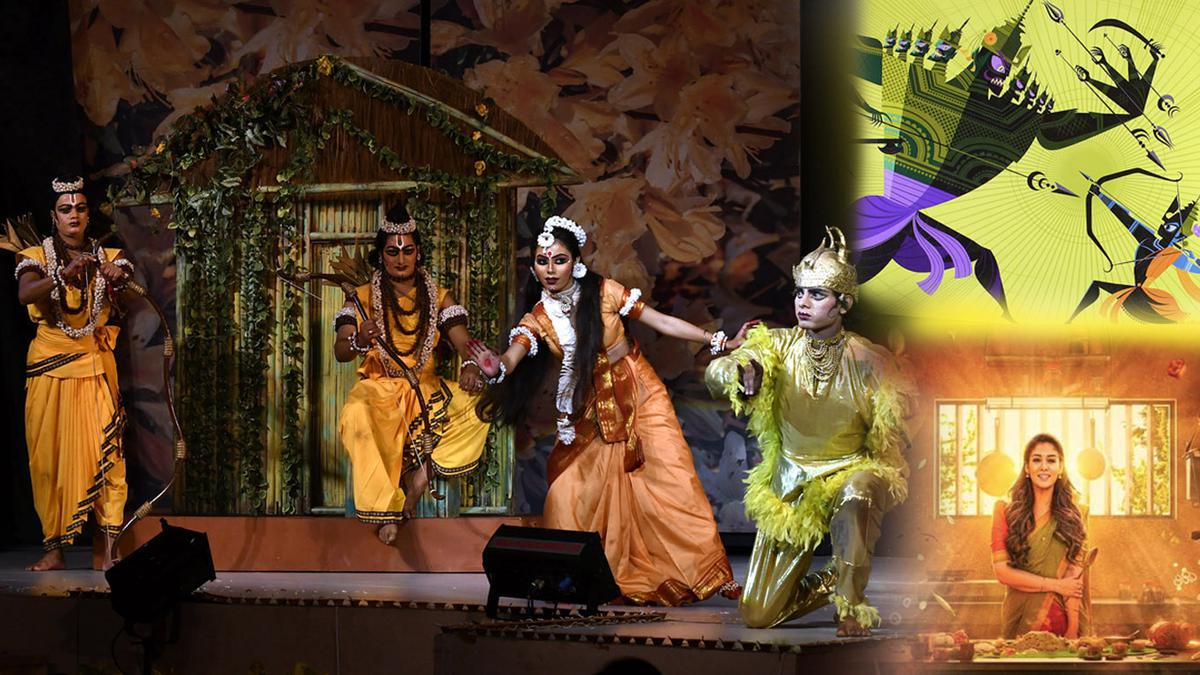
Column | There were many Ramayanas
The Hindu
We all have our own versions of the Ramayana because it belongs to all of us
When I was a child I wanted to write a version of the Ramayana where Jatayu did not die. The death of a great bird who tries to save Sita when Ravana abducts her always left me devastated. I would try to will Jatayu to rise like the Phoenix. I wanted to write the Jatayu-ana.
I never did write that story: not because anyone told me I was not allowed to do it. I didn’t have the imagination to give Jatayu a new life. But I loved the Ramayana because it had bears, monkeys, squirrels and epic battles. To me Ram, Lakshman and Sita were less interesting. The real action lay elsewhere.
ALSO READ Column | Take a ‘wow’, Jasmeen Kaur
Later I realised we all have our own Ramayanas because it belongs to all of us. We see our own stories reflected in its magic mirror. The scholar Rakhshanda Jalil told me once there are some 300 Urdu versions. The brilliant writer of Bengali nonsense Sukumar Ray wrote Lakshmaner Shaktishel, a spoof based on the Lanka-kanda chapter. There Hanuman, reluctant to travel to a far-off mountain to get a magic herb, suggests they try homeopathy first. There are even quips about undying faith in swadeshi medicine long before anyone thought of a ministry for AYUSH.
Bengali jatra folk theatre had a version, Bharat Bidaay, which reimagines the Ramayana as a story where Kaikeyi actually loves Ram more than her own son. But she is coerced by the sage Vishwamitra into sending him into exile because he needed Ram to fight the forces of evil. Chapal Bhaduri, one of the last great female impersonators of Bengali theatre, told me that role was such an emotional powerhouse, the playwright dedicated the script to him.
In America I met Sanjay Patel who grew up in California hearing his parents say ‘Siyaram’ whenever anyone sneezed. Hardly interested in Indian culture, he thought it was just desi gesundheit. Only later he realised they were saying ‘Sita Ram’. In the thrall of X-Men, G.I. Joe and ninjas, he understood much later he had superheroes in his own cultural backyard. By then he was a storyboard artist for Pixar and he turned his skills towards telling those stories he had once ignored. I still remember the thrill of stumbling upon his book Ramayana: Divine Loophole. The illustrations leapt off the page — Hanuman streaking across a sooty chocolate sky, his tail on fire, setting Ravana’s palace ablaze in a bonfire of orange and yellow. It was as if he had opened another portal into my grandmother’s Ramayana.
At a time when a film is yanked off Netflix because devotees are incensed at the suggestion that Ram might have eaten meat, the space for reinterpreting the Ramayana is shrinking. Some would argue that artists and writers need to understand that this is a sacred story for millions, not an artistic plaything for a few. M.F. Husain certainly felt that sting as did animation artist Nina Paley whose film Sita Sings the Blues told the story from a woman’s perspective as a ‘tale of truth, justice and a woman’s cry for equal treatment’. “Just Google ‘ban Sita sings the blues’ and you will see all the petitions out there,” she told me. Paley understood that what to her was a story was a sacred cow to others.











